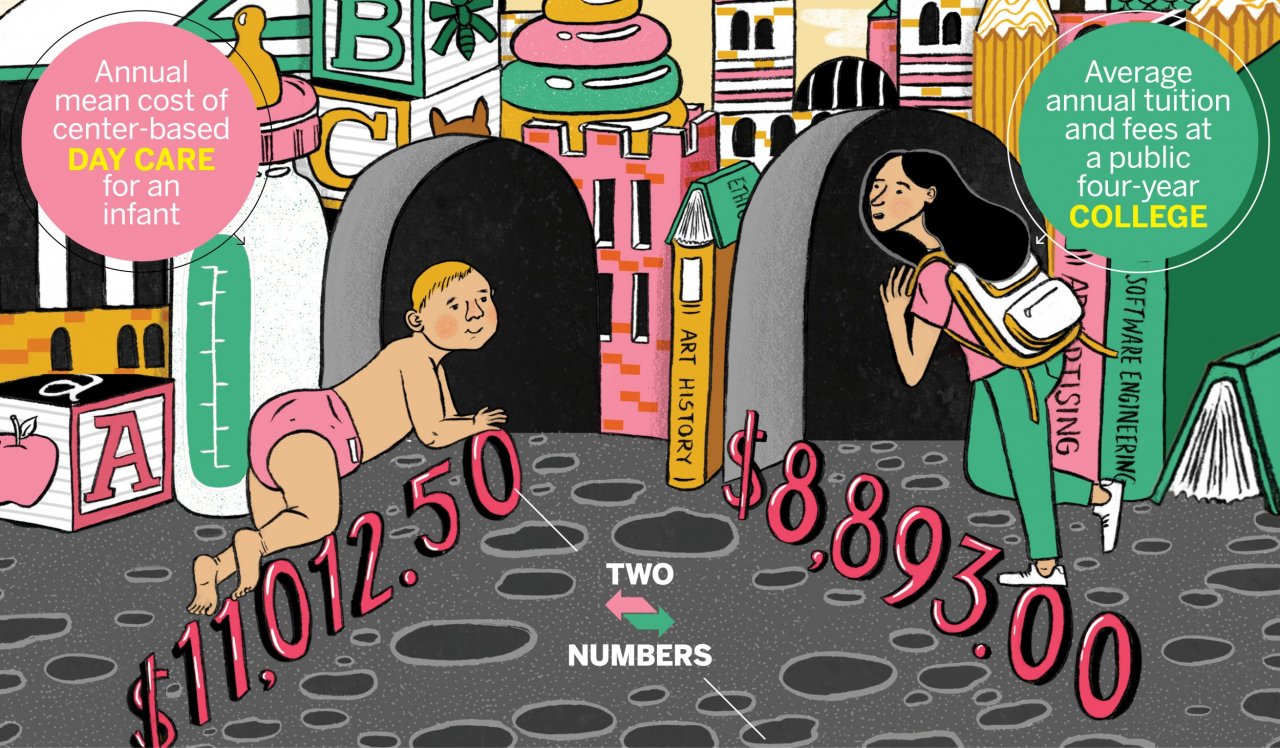
It's the most common unsolicited advice new parents receive: Start saving for college. But the financial challenges of parenting come due much earlier—before a child is even out of diapers. In the U.S., the price for a year of infant day care has already surpassed that of some four-year public universities, according to a report published by Child Care Aware of America, a national nonprofit that advocates for affordable options for families.
Working parents who don't have a doting grandparent nearby can expect to fork over as much as $16,000 a year to ensure their baby is fed, diapered, cuddled and entertained by a trained professional. In most states, the average annual cost for child care also surpasses the average amount to keep a roof over the family.
Families in the Northeast pay the most for center-based care; in Massachusetts, center-based infant care costs an average of $16,549 per year. The expense is far less for families living in the South and cheapest in Mississippi, where day care may add up to just $5,496 out-of-pocket. But even the least expensive care is still unmanageable for a lot of families. In many states on the West Coast, for example, the average cost of care adds up to 14 percent of the state median income for a married couple with children. Nationwide, the situation is most dire for single-parent families, where the cost of care is more than 23 percent of the median income.
Patricia Cole, director of government relations at Zero to Three, a national nonprofit that advocates for early childhood education, says staffing costs are the biggest driver for the astronomical expense. That doesn't mean workers are paid well; the average income in 2013 for a full-time child care professional was $21,490. But infant care is labor-intensive and demanding. A baby may require as many as eight diaper changes and four bottle feedings a day, so more caretakers are needed at infant care centers than at centers for older children.
"Different states have different requirements," says Cole. "Some states might require one staff person for every four children. Others might go up as high as every staff member for six infants."
Add cribs and other equipment, special transportation vehicles and laundry service to the mix and the cost begins to add up quickly.
Most parents have little choice but to pay for day care from the time their children are very young, often as little as six weeks after the baby is born. That's if Mom's even lucky enough to work for a company that allows time off; only 12 percent of Americans employed in the private sector have access to paid family leave, according to the U.S. Department of Labor.
Cole says several bills have been introduced in Congress to improve the situation for working families. One bill, from Senator Bob Casey (D-Pa.), closely matches an item in President Barack Obama's 2016 fiscal year budget, which proposes expansion of tax credits for child care costs. The budget would triple the maximum Child and Dependent Care Tax Credit for families who have annual household incomes up to $120,000 and children under 5. If this were to occur, families could claim up to $3,000 a year in tax credits per child.
About the writer
Jessica Firger is a staff writer at Newsweek, where she covers all things health. She previously worked as a health editor ... Read more














